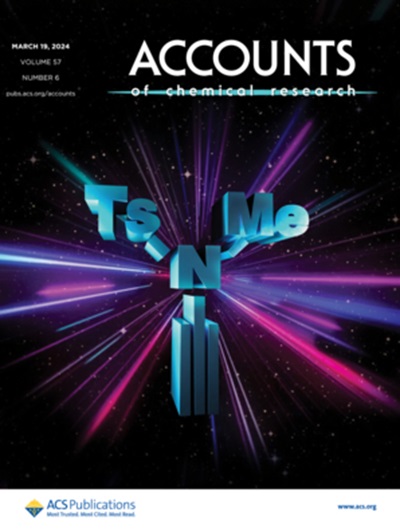推进胆固醇检测:基于 SrTiO3 的生物场效应晶体管生物传感器的模拟研究
IF 16.4
1区 化学
Q1 CHEMISTRY, MULTIDISCIPLINARY
引用次数: 0
摘要
本研究提出了一个基于钛酸锶(SrTiO3)的生物场效应晶体管(BioFET)分析模型,用于胆固醇检测。钛酸锶以其高介电常数、表面电荷调节能力以及优异的离子和热传导性而著称,它被用来增强生物传感器的功能。BioFET 生物传感器采用了一个具有胆固醇特异性酶功能的 SrTiO3 栅极,有助于胆固醇浓度的电位测量。该模型建立了胆固醇浓度与酶固定 SrTiO3 栅极电压之间的定量关系。结果表明,基于 SrTiO3 的生物场效应晶体管对胆固醇的检测具有高度选择性,表明其在开发胆固醇相关疾病诊断工具和食品质量监测方面具有潜力。分析模型有效地预测了电化学生物场效应晶体管生物传感器的检测机制行为,强调了该生物传感器在微电子、传感器、催化和光伏等多个领域的创新应用。本文章由计算机程序翻译,如有差异,请以英文原文为准。
Advancing Cholesterol Detection: A Simulation Study on SrTiO3-Based BioFET Biosensors
This study presents an analytical model of a strontium titanate (SrTiO3)-based biological field-effect transistor (BioFET) for cholesterol detection. SrTiO3, known for its high dielectric permittivity, surface charge regulation, and superior ionic and thermal conductivity, is utilized to enhance biosensor functionality. The BioFET biosensor employs an SrTiO3 gate functionalized with a cholesterol-specific enzyme, facilitating the potentiometric measurement of cholesterol concentrations. The model establishes a quantitative relationship between cholesterol concentration and the gate voltage in the enzyme-immobilized SrTiO3. It demonstrates that SrTiO3-based BioFETs are highly selective for cholesterol detection, indicating their potential in developing diagnostic tools for cholesterol-related conditions and food quality monitoring. The analytical model effectively predicts the detection mechanism's behavior in electrochemical BioFET biosensors, underscoring the biosensor's innovative application in various fields including microelectronics, sensors, catalysis, and photovoltaics.
求助全文
通过发布文献求助,成功后即可免费获取论文全文。
去求助
来源期刊

Accounts of Chemical Research
化学-化学综合
CiteScore
31.40
自引率
1.10%
发文量
312
审稿时长
2 months
期刊介绍:
Accounts of Chemical Research presents short, concise and critical articles offering easy-to-read overviews of basic research and applications in all areas of chemistry and biochemistry. These short reviews focus on research from the author’s own laboratory and are designed to teach the reader about a research project. In addition, Accounts of Chemical Research publishes commentaries that give an informed opinion on a current research problem. Special Issues online are devoted to a single topic of unusual activity and significance.
Accounts of Chemical Research replaces the traditional article abstract with an article "Conspectus." These entries synopsize the research affording the reader a closer look at the content and significance of an article. Through this provision of a more detailed description of the article contents, the Conspectus enhances the article's discoverability by search engines and the exposure for the research.
 求助内容:
求助内容: 应助结果提醒方式:
应助结果提醒方式:


